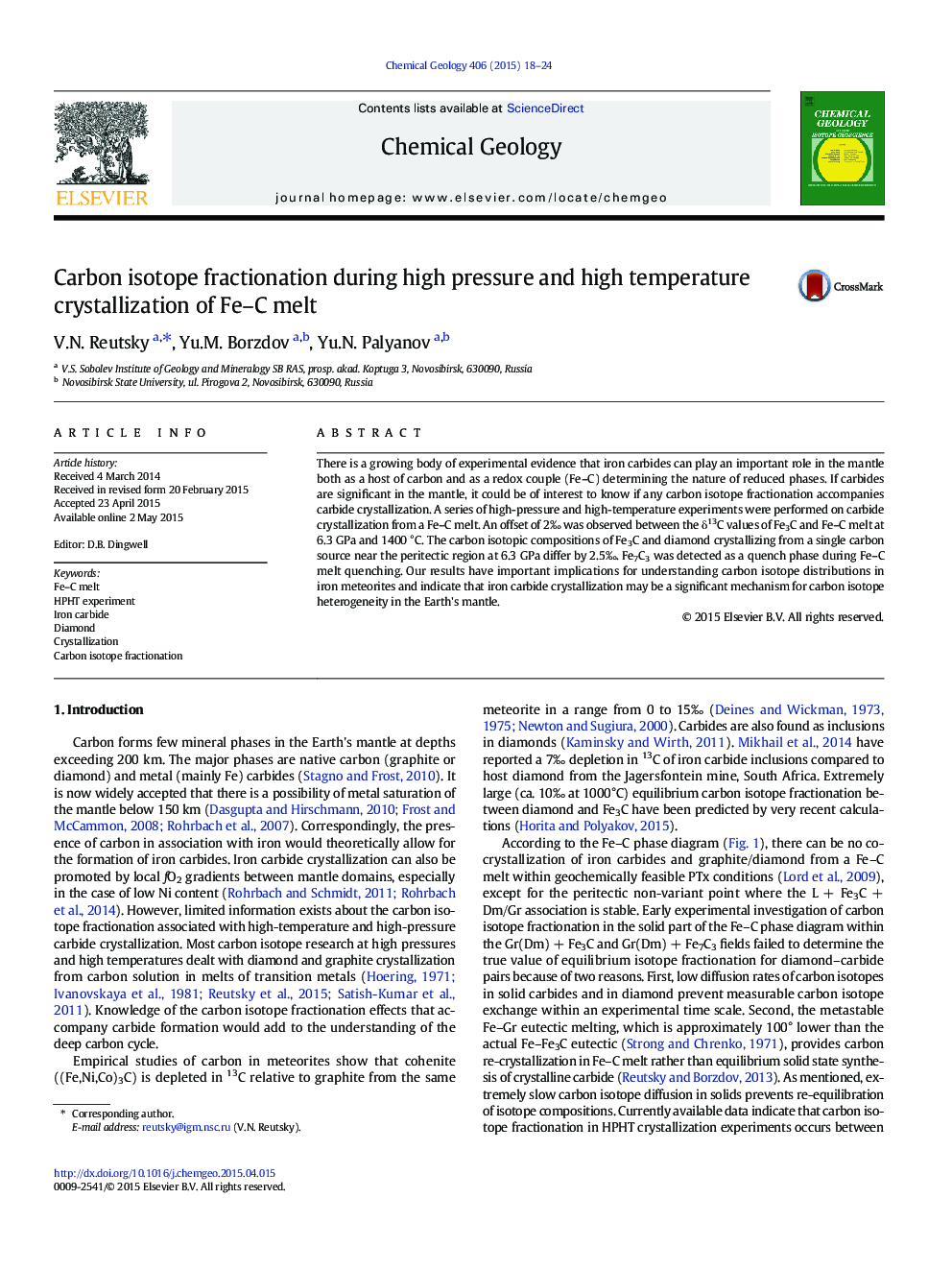| Article ID | Journal | Published Year | Pages | File Type |
|---|---|---|---|---|
| 6436402 | Chemical Geology | 2015 | 7 Pages |
â¢Crystallization of Fe-C melt at high pressure and high temperature accompanied by carbon isotope fractionationâ¢Fe3C is 2â° heavier in C isotopes than its parent Fe-C melt at 6.3 GPa and 1400 °Câ¢Diamond works as a trap for 13C isotope in Fe-C systemâ¢Peritectic reaction of diamond with liquid provides increase of δ13C in the meltâ¢MORB and OIB mantle source should be distinct in carbon isotope signature
There is a growing body of experimental evidence that iron carbides can play an important role in the mantle both as a host of carbon and as a redox couple (Fe-C) determining the nature of reduced phases. If carbides are significant in the mantle, it could be of interest to know if any carbon isotope fractionation accompanies carbide crystallization. A series of high-pressure and high-temperature experiments were performed on carbide crystallization from a Fe-C melt. An offset of 2â° was observed between the δ13C values of Fe3C and Fe-C melt at 6.3 GPa and 1400 °C. The carbon isotopic compositions of Fe3C and diamond crystallizing from a single carbon source near the peritectic region at 6.3 GPa differ by 2.5â°. Fe7C3 was detected as a quench phase during Fe-C melt quenching. Our results have important implications for understanding carbon isotope distributions in iron meteorites and indicate that iron carbide crystallization may be a significant mechanism for carbon isotope heterogeneity in the Earth's mantle.
